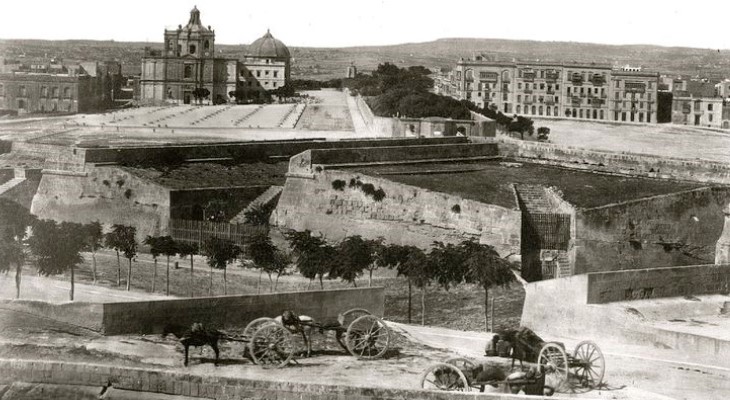The iconic monument guarding the entrance to Malta’s capital city springs back to life after restoration.
For almost six decades, three giant mermen have greeted visitors to Malta’s capital city, Valletta. The majestic Triton Fountain is one of Valletta’s most important Modernist landmarks, and a much-loved icon for all Maltese.
After years of damage and “inartistic” repairs, the Triton Fountain has finally been given the TLC it desperately needed, and following a €4 million makeover in Italy, the blue mermen of Greek mythology are back in their full power and glory, overseeing all those who enter the hallowed gates of Valletta.
History

Floriana Local Council
Designed by sculptor Vincent Apap and draughtsman Victor Anastasi, the fountain first started flowing in May 1959. However, it never received the official inauguration it deserved, as Malta’s government had just resigned and the political situation in colonial Malta at the time was uneasy.
The fountain design was the winner of a government competition aimed at filling the gap left after St Magdalen’s Ravelin, a 17th century lunette, was dismantled and filled with rubble to be turned later into a bus terminus. It took four years to complete and, at a cost of £80,000 in old money (that’s over £1.7million in today’s currency), this was monumental in all senses of the word right from the start.
Design
The fountain features three bronze tritons, two of them sitting, one kneeling, all holding up a platter. They are balanced on a seaweed base. The son of Poseidon and Amphitrite, Triton is the messenger of the sea in Greek mythology (but you knew that, of course). These Maltese tritons symbolise Malta’s links with the sea. The base was constructed out of reinforced concrete and clad in 730 tonnes of travertine slabs from Rome. Underneath the fountain are a series of passageways and chambers used for maintenance.
A local icon
The fountain immediately captured the imagination of the locals, and it quickly became a landmark featuring in various events including the Republic Day national festivities. It even served as a performance stage for concerts and, believe it or not, motorbikes have even been driven up specially constructed ramps to zoom around the platter.

Facebook/Malta - 2018 European Capital of Culture
All this proved too much for the mighty tritons, with one of them losing an arm in March 1978, and later the platter collapsed, damaging two of the figures. Repairs in the 1980s were deemed “inartistic” and proved unpopular.
A glorious rebirth
After an extensive restoration and with the bus terminus now relocated a few metres to the side and the area around the fountain now re-designed as an expansive piazza, the mighty tritons rule once more. Magnificent by day, magical by night, the Triton Fountain is proudly back where it belongs. Don’t leave Malta without a selfie alongside this icon.
Did you know?
All three mermen face Valletta’s City Gate.